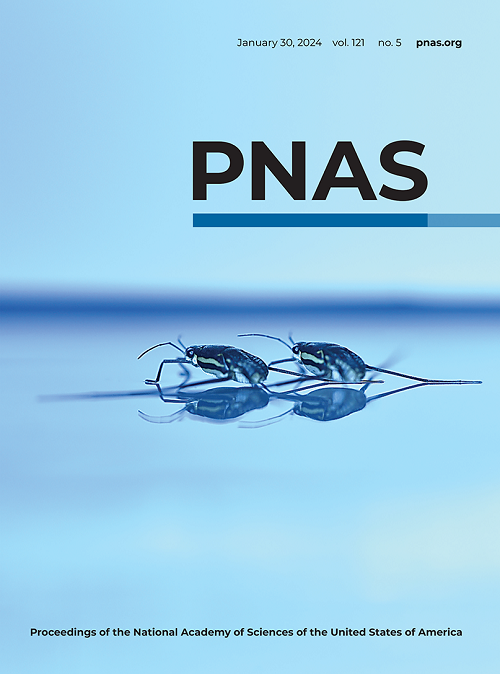Illuminating an invisible state of the HIV-1 capsid protein CTD dimer using 19 F NMR and weighted ensemble simulations
IF 9.4
1区 综合性期刊
Q1 MULTIDISCIPLINARY SCIENCES
Proceedings of the National Academy of Sciences of the United States of America
Pub Date : 2025-02-18
DOI:10.1073/pnas.2420371122
引用次数: 0
Abstract
The HIV-1 capsid protein (CA) assembles into a conical shell during viral maturation, encasing and protecting the viral RNA genome. The C-terminal domain (CTD) of the two-domain capsid protein dimerizes, and this dimer connects individual chains in the mature capsid lattice. Previous NMR studies have shown that different dimer arrangements can be formed by isolated capsid protein chains and in assembled capsid lattices; however, the dynamics and functional relevance of these alternate dimers are unknown. To explore the conformational landscape of the CA-CTD dimer, we carried out atomistic molecular dynamics simulations using the weighted ensemble path sampling strategy, generating an ensemble of conformations. Focusing on the two dimer forms previously observed via solution NMR, we refined the conformational ensemble to highlight two metastable states using a Markov state model. Experimentally, we measured the interconversion rates between the two alternate dimers using求助全文
约1分钟内获得全文
求助全文
来源期刊
CiteScore
19.00
自引率
0.90%
发文量
3575
审稿时长
2.5 months
期刊介绍:
The Proceedings of the National Academy of Sciences (PNAS), a peer-reviewed journal of the National Academy of Sciences (NAS), serves as an authoritative source for high-impact, original research across the biological, physical, and social sciences. With a global scope, the journal welcomes submissions from researchers worldwide, making it an inclusive platform for advancing scientific knowledge.

 求助内容:
求助内容: 应助结果提醒方式:
应助结果提醒方式:


